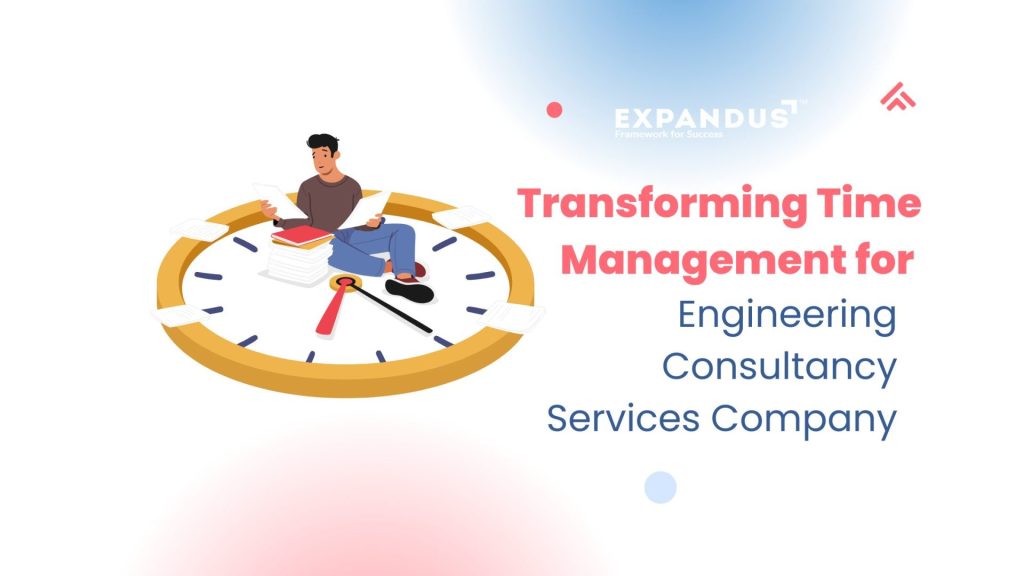Transforming Time Management for an Engineering Consultancy Services Company
Background In this case study, we explore the journey of a highly technical technocrat business ...
Background
In this case study, we explore the journey of a highly technical technocrat business owner who has been running an Engineering Consultancy Services company in India for the past 35 years. Known for providing perfect solutions to ensure their process plants never fail, this business has a stellar reputation in their region for rectifying and revamping non-functional plants. However, the owner’s perfectionist attitude, while beneficial for maintaining high standards, also presented significant challenges.
A non-negotiable rule in the organization mandated that every technical proposal sent to prospects had to be scrutinized by the owner himself. This task consumed 4 to 5 hours of his time each day, sometimes even more. The owner firmly believed that this activity could neither be dropped nor delegated.
During the first month of the coaching engagement, it became clear that freeing up the owner’s time was a top priority. The reasons were twofold: the owner’s age, which was well past the normal retirement age, and the interest from potential investors. Investors typically seek businesses that can grow independently of the owner, but despite making good profits year on year, the company was not growing. The absence of sales and marketing functions was a critical gap, acknowledged by the owner who simply had no time to address it.
Transformation Journey
Coaching Methodology
The coaching methodology involved asking deep questions to help the owner see his own limiting beliefs and overcome them independently. It provided an outsider’s perspective, essential for someone deeply immersed in their business and unable to see the forest for the trees.
Step 1: Immediate Solution
The coach highlighted that while the owner’s meticulous proposal checking impacted a few clients, a substantially larger number of clients could benefit if he focused on sales and marketing. A crucial question was posed: “Do you want to work as a proposal auditor or as a business owner?”
An immediate solution was implemented where the owner would scrutinize only those proposals likely to be finalized, while the rest were sent as budgetary proposals without minute technical details. This change reduced his workload by 50%.
Step 2: Mid-Term Solution
The mid-term solution involved a brainstorming exercise within the Proposal Engineers team. Team members were encouraged to cross-check each other’s proposals for errors and improvements. Initially, a few sessions were led by the owner to set the standard, but eventually, the team continued the practice independently. This collaborative approach ensured that while the proposals might not be the most optimized, they were definitely technically correct.
Step 3: Long-Term Solution
The long-term solution focused on knowledge transfer from the owner to the team. Given his passion for teaching, regular training sessions were conducted where the owner could pass on his expertise to the Proposal Engineers. To make this sustainable, a Learning Management System (LMS) was implemented, capturing videos of these training sessions. This way, the owner had to conduct the training only once, but it could be accessed by any company employee anytime in the future.
Outcome
Through these strategic changes, the company experienced significant positive transformations:
- Freed-Up Time: The owner’s daily workload was substantially reduced, freeing up time to focus on growth activities.
- Improved Efficiency: The Proposal Engineers team became more self-reliant and efficient, producing technically correct proposals independently.
- Knowledge Transfer: The introduction of the LMS ensured that the owner’s knowledge was preserved and accessible to all employees, fostering continuous learning and improvement.
- Enhanced Growth Potential: With more time available, the owner could focus on establishing and expanding sales and marketing functions, positioning the company for future growth.
This transformation journey illustrates that even deeply ingrained practices can be modified with a structured approach, leading to significant improvements in efficiency and business growth. If you face similar challenges and wish to free up time for strategic activities, reach out for a complementary brainstorming session. Let’s work together to find the best solutions for your business challenges.

